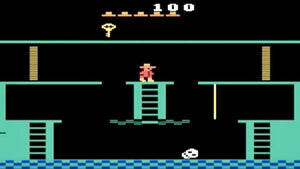1983: The year the video game industry almost died
Sep 11, 2023
The late 1970s and the early 1980s brought a new favorite pastime for the world: home console video games. Before this time, we were spending every last dime we had at the arcade playing classic games like Space Invaders, Galaxian and Pac-Man.

But when Atari launched Space Invaders on their home console in 1980, the market began shifting and a demand for more and more games we could play at home was born. This craze had everyone coveting the latest game release and companies were scrambling to crank them out. The market became flooded with sub-par games all trying to go viral. This created a backlash against video game consoles.
At the same time, personal computers were on the rise. With plenty of demand, the price of owning one was in reach for many families and people began choosing them over the alternative of owning a gaming console. Personal computers also offered gaming options and included many other features as well.
This marks the beginnings of the great video game crash of 1983. The blame for this crash can be attributed to the saturation in the number of home consoles and available games and to increased interest in personal computers.
The crash lasted around 2 years from 1983-1985 and resulted in the bankruptcies of several home computer and video game console companies. Many companies producing video games, mainly third party development companies were forced to close. Because of this, toy stores, the main retailer of video games, decided that this was all just a passing fad and stopped carrying them in the stores.
The day everything starting looking up was when Nintendo Entertainment System came on the scene. Nintendo attributed Atari’s downfall to the over production of no-good 3rd party games and resolved themselves to make fewer, high quality games. In order to do this, Nintendo created a “seal of quality” which it put on games that met their high standards.
In retrospect, this video game crash, which was felt primarily in North America, left us with 2 long-lasting effects. First, the home console market which before the crash was largely dominated by the US, moved to Japan. As time progressed into the 1990s Japanese companies such as NES and Sega became the leaders of this industry. Another direct result of this event was the increase in regulations to control third party software development. Preventing the use of unlicensed games and the creation of anti-piracy software were the main bi-products.
Despite this rather large hiccup in the video game industry, it has survived and is thriving today. We can look back at this scary time in its history and learn that more isn’t always better and quality is king!





